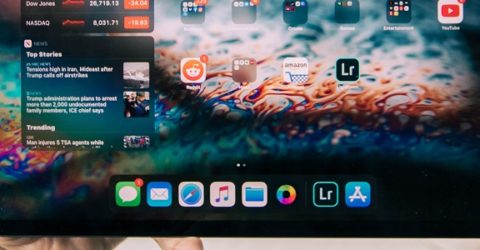Save your old tech… it may become a classic!
You might be tempted to throw old technology away, but it may have value as a future example of classic equipment.

In today’s rapidly-evolving consumer electronics market, products which were marketed as cutting-edge just a few years ago can seem archaic by modern standards.
Most of us have replaced perfectly serviceable electronics with new items that are perceived as being ‘better’ in some way.
Manufacturers design products with in-built obsolescence, because company profits and shareholder pressure demand upgrades and replacements, even if previous models still work well.
This poses a question of what to do with the electronics being replaced.
They could be sold, given to friends or donated to charity shops, while many consumer electronics end up at recycling centres.
Yet this could be a mistake. Because old technology is often highly valued among collectors, antiquarians, museums and people who enjoyed these older platforms or systems.
Something old…
In the early 1980s, a Ferrograph reel-to-reel tape deck or Sinclair Spectrum personal computer would have been unremarkable elements in a living room.
Today, they’re prized collector’s items.
A working Ferrograph ought to fetch £600 on eBay, while a refurbished rubber-keyed Spectrum can easily retail for the £125 it originally cost back in 1982.
In the intervening four decades, the value of these consumer electronics plummeted, before dwindling numbers and rising nostalgia sent selling prices upward.
And while we’re not advocating retaining today’s household goods for four decades just to recoup the purchase price, it’s interesting to see how old technology evolves into classic equipment.
…Something newly appreciated
There are no hard and fast rules for identifying electronics that will appreciate in value, in the same way modern cars rarely present themselves as prospective classics.
Despite being rivals in the 1970s, the Ford Cortina and Morris Marina quickly grew apart. One is now a coveted icon, while the other routinely has pianos dropped on it in TV shows.
It helps if a particular brand or product had a cult following when it was contemporary. Conversely, market-leading items are indelibly imprinted with the ‘I had one of those’ cachet.
Some consumer electronics achieved neither fame nor adulation.
The Spectrum was beloved by an entire generation, whereas Sinclair’s follow-up QL is a forgotten footnote in history – neither cult classic or bestseller.
That old ITT television in the attic won’t fetch much at auction because it was unremarkable in the 1970s and remains so today. Ditto Minidisc players, pagers and fax machines.
To gain in value, old technology should ideally have been ground-breaking. The first-generation iPad is a future classic, like the Nintendo Gameboy or original Sony PlayStation.
Some obsolete technologies are experiencing a renaissance, from instamatic cameras to record players, so don’t ignore trends when weighing up the potential value of old tech.
Finally, durability provides another clue about future appeal. Even a heavily-used Nokia 3310 is unlikely to break, wear out or become unrepairable.
Next time you’re having a clearout, consider whether old technology might be a future classic before consigning it to landfill.






